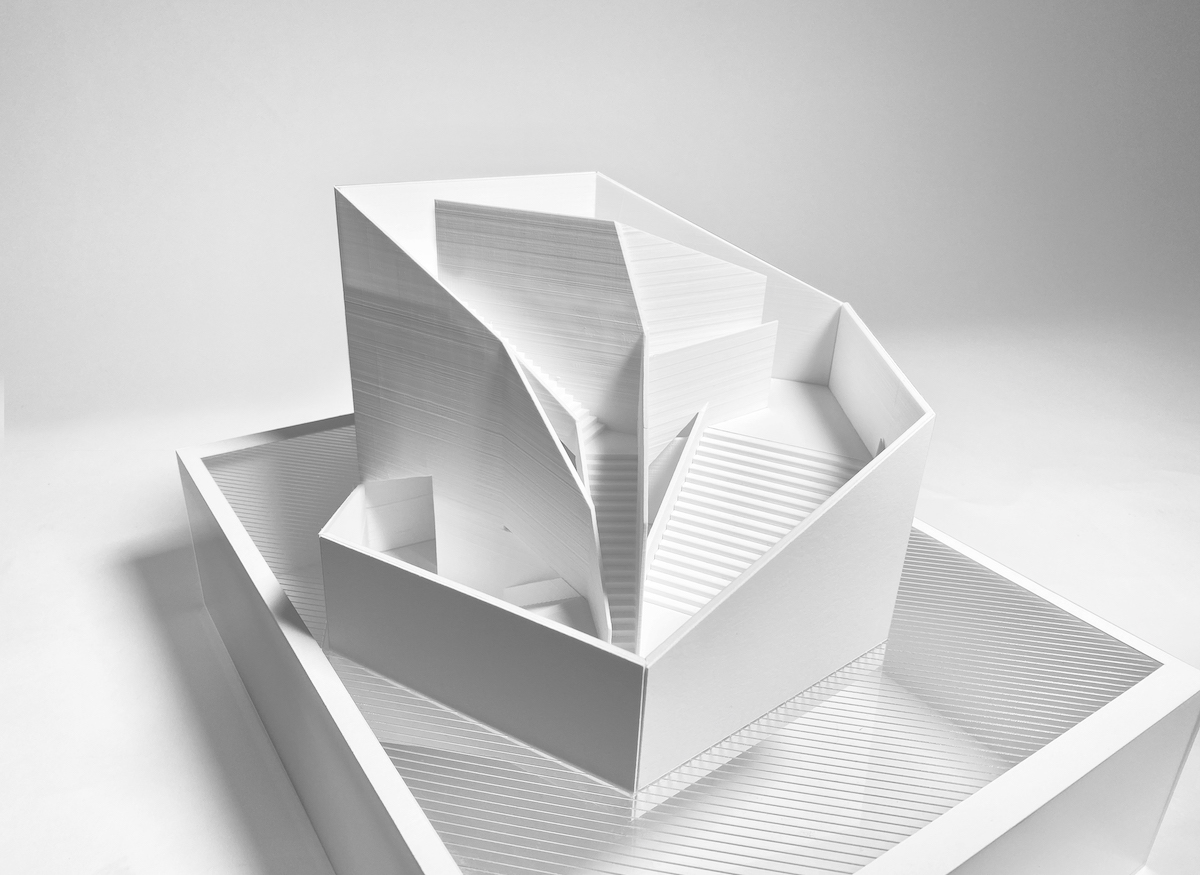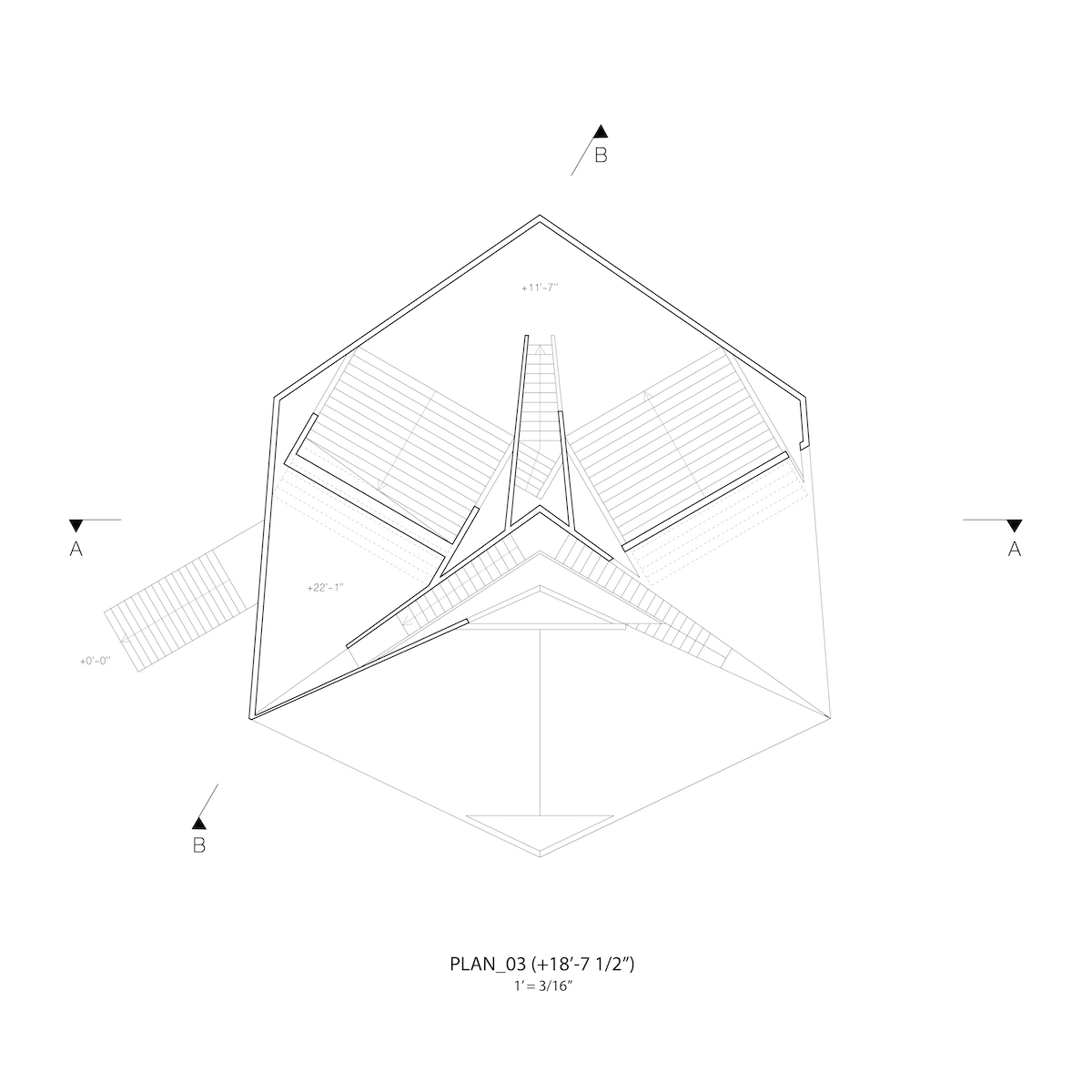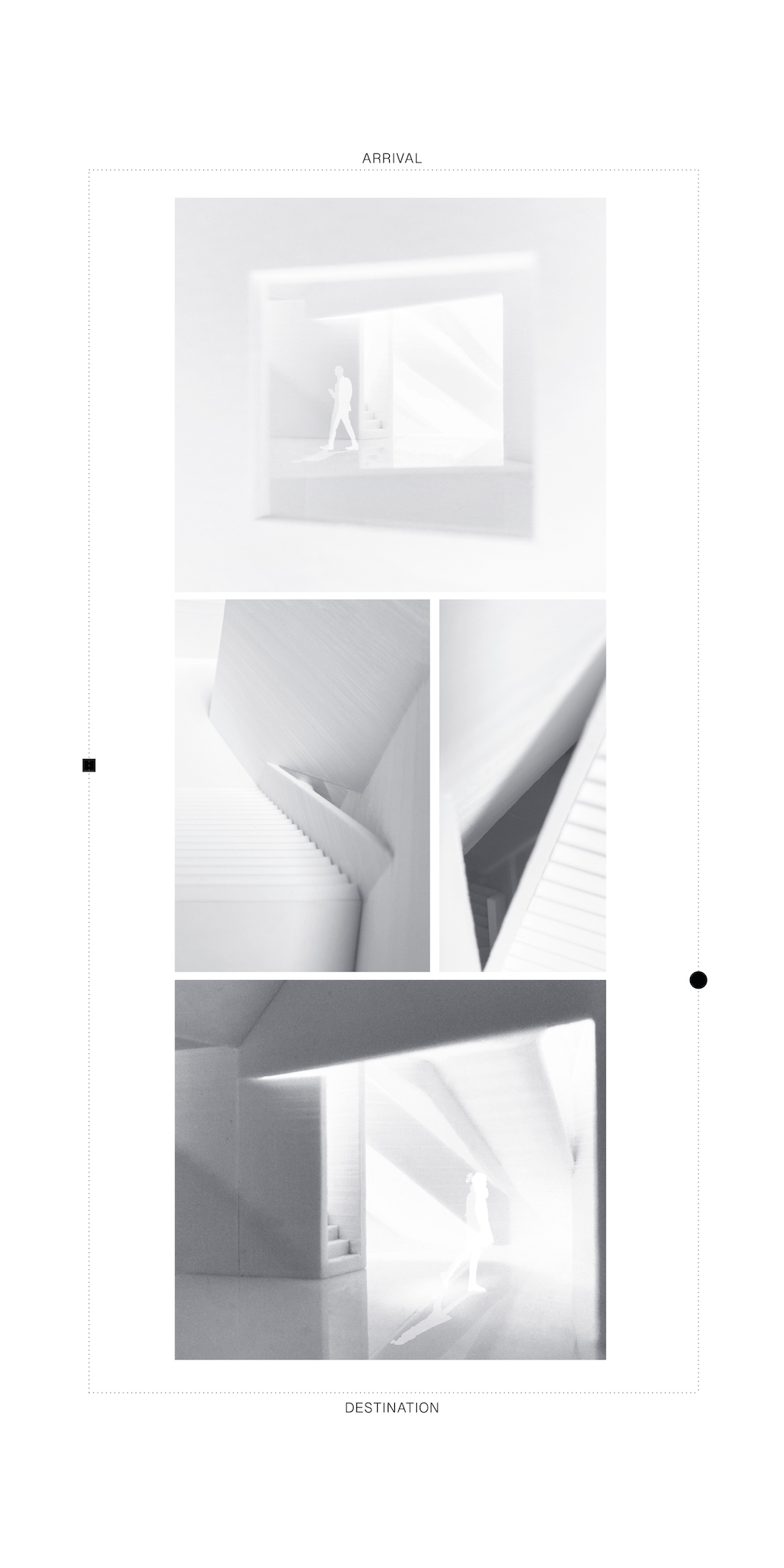Re-fragmentation

By Thomas Huang (MArch I ’23)
This spatial exercise renders a perfectly centralized space as non-existent through a discrepancy between rigorous geometrical logics and fragmented viewing experiences.
Lines converging at the center of an equilateral triangle are offset and then mirrored along the edges to form a hexagon. Two small corners are then cut from each of the three rhombic volumes, with half of them naturally clustering into a smaller equilateral triangle in the center.
The conspicuous duality of two concentric triangles, with the smaller one intended as the “hidden” space, is blurred and broken down in its own architectural experience. Within a helical arrangement of rhombic rooms are egress bridges that unpredictably skip levels. Alternating between open spaces, narrow stairs and a fixed turning angle of 120 degrees, flexible spatial sequences generate multiple continuous loops while inducing a false certainty that all the bridges loop back to previously visited rooms merely as a secondary means of circulation. This system, however, connects all the passages except one: the entrance to the central room. Though furnished with the same narrow stairs, this open passage remains unvisited, not by act of concealment, but through a pre-established assumption. This paradigm is ultimately manifested through openings – identical in shape as the small corners cut from the rhombic volumes – that each overlaps precisely 1/6 of the hidden room. As one encounters them separately on their way up and down, these views are collected but cannot be mapped or pieced together. Rather, they float in one’s memory as individual fragments. There will rarely be a realization that these fragments are in fact crucial forms that relate to each other, and parts of a unified whole that constitutes a fifth room. Ironically, though, at the moment the visitor peeks through the last opening, they will have seen the entirety of this room, all without being aware of its existence.


